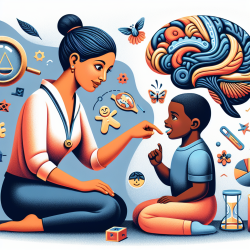Developmental stuttering is a complex communication disorder that affects approximately 5% of children, with a significant portion recovering spontaneously. However, for those who continue to stutter into adulthood, effective intervention strategies are crucial. A recent systematic review titled "The state of the art in non-pharmacological interventions for developmental stuttering" provides valuable insights into the effectiveness of various treatment approaches.
Understanding Non-Pharmacological Interventions
The systematic review conducted by Susan Baxter et al. aimed to synthesize evidence on the clinical effectiveness of non-pharmacological interventions for managing developmental stuttering. The review encompassed a broad range of interventions, including behavioral modifications, cognitive therapies, and technology-assisted methods.
Key Findings from the Review
- Diverse Treatment Options: The review highlighted that most non-pharmacological interventions could benefit individuals who stutter, though responses varied significantly among individuals.
- Sustained Effects: Positive outcomes were generally maintained post-intervention across various methods, although feedback and technology interventions showed weaker long-term effects.
- Need for Consensus: There is a need for greater consensus on key outcomes used to evaluate stuttering interventions and an enhanced understanding of how these interventions effect change.
Implications for Practitioners
The findings from this review offer several implications for practitioners aiming to improve their skills and treatment outcomes:
- Diversify Treatment Approaches: Practitioners should consider incorporating a variety of intervention types to cater to individual needs, as there is no one-size-fits-all solution for stuttering.
- Focus on Long-Term Outcomes: Emphasizing interventions that demonstrate sustained effects can lead to more lasting improvements in fluency and communication confidence.
- Pursue Further Research: Encouraging further research into individual variations in response to treatments can help identify which patients may benefit most from specific interventions.
The Role of Technology
The use of technology in stuttering treatment is an exciting area with potential benefits. Devices that alter auditory feedback have shown promise in reducing stuttering frequency during use. However, practitioners should be aware of the variability in individual responses and the potential need for supplementary therapeutic techniques to maintain gains.
The Path Forward
This comprehensive review underscores the importance of continued research and adaptation in therapeutic practices. By staying informed about emerging evidence and integrating diverse intervention strategies, practitioners can enhance their ability to support individuals who stutter effectively.
If you're interested in delving deeper into the research findings, you can read the original paper: The state of the art in non-pharmacological interventions for developmental stuttering. Part 1: a systematic review of effectiveness.










